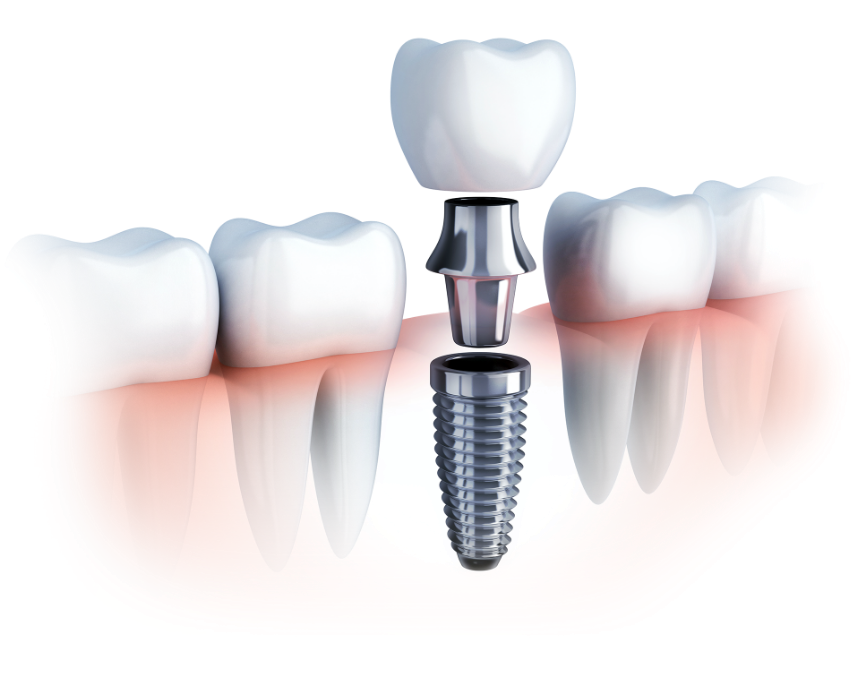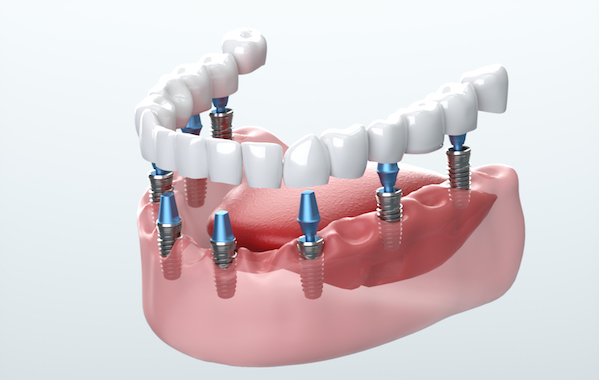Full Mouth Dental Implants Holland MI - Dental Implants - Conditions & Treatments
Full Mouth Dental Implants Holland MI - Dental Implants - Conditions & Treatments
Blog Article
Full Mouth Dental Implants Muskegon Heights MI - How Much Do Dental Implants Cost? A Price Breakdown
The journey toward dental implants begins with a thorough assessment of the jawbone's condition. When there's insufficient bone density to assist an implant, bone grafting turns into a crucial procedure to recreate a steady foundation. Understanding how much bone grafting is needed pop over here for dental implants significantly influences the remedy plan, timeline, and total browse around these guys success rate.
The quantity of bone grafting required is determined by a number of factors, including the extent of bone loss, the implant's dimension, and the specific location throughout the mouth. In circumstances of great bone loss because of periodontal diseases, trauma, or prolonged tooth loss, more intensive grafting may be needed. Conversely, if the bone loss is minimal, a smaller graft might suffice.
Dental Implant And Bridges Grand Rapids MI - Full Mouth Dental Implants
The evaluation course of typically entails imaging research such as X-rays or 3D scans, allowing the dental professional to visualise the bone structure (Full Mouth Dental Implants Muskegon Heights MI). These photographs assist in determining the standard and quantity of current bone. If the bone is deemed inadequate, the dentist will then outline the suitable grafting procedures
Grafting could be sourced from various areas. Autografts, which contain harvesting bone from the patient's personal body, are often deemed the gold commonplace. These supply glorious integration with the present bone however include the downside of further surgery. Other options embrace allografts, which use donor bone, and artificial materials designed to mimic natural bone. Each option has its own implications on therapeutic and success rates.
After figuring out the necessary quantity of bone grafting, the dental skilled will create a tailored plan for the affected person. This plan may embrace the timing of bone grafting in relation to the implant placement. In some cases, a graft could be performed simultaneously with the implant surgery. Alternatively, in additional difficult scenarios, a separate healing interval is indicated.
Healing timelines vary primarily based on the person's health, the extent of grafting, and the type of graft used. Generally, the healing of a bone graft takes a quantity of months earlier than an implant could be positioned. During this time, bone regeneration happens, resulting in a stable base for the implant.
Dental Implant And Bridges Wyoming MI - Dental Implants Procedure: What to Know
Patients often wonder concerning the risks associated with bone grafting. While complications corresponding to infection or graft failure are attainable, these occasions are comparatively rare. Adhering to post-operative care instructions and attending follow-up appointments decrease risks and promote therapeutic.
Once the bone has adequately healed, the dentist assesses the graft's success by evaluating the bone density and stability. If every little thing seems favorable, the subsequent steps toward placing the dental implant can start. The success of this next step largely hinges on the quality of the bone graft and its integration with the encircling bone.
Cost issues play an important role in the decision-making process. The expense of bone grafting varies based on materials used, the complexity of the case, and geographic location. It is essential for sufferers to debate funds upfront to keep away from surprising payments later within the remedy.
Dental Tooth Implant Wyoming MI - Dental Implants - an overview
Also, patients should have sensible expectations regarding the timeline and outcomes. Many factors can influence how a lot bone grafting is needed and its general effectiveness. A collaborative method involving the patient and the dental staff not only ensures clarity but additionally enhances the chances of a profitable outcome.

Maintaining good oral hygiene and regular dental visits following the process is vital. These practices can prevent problems and make sure that each the graft and the implant remain secure over time. The ongoing relationship with a dental skilled is crucial, particularly in the months following the procedures.
In conclusion, understanding how much bone grafting is required for dental implants encompasses a multi-faceted approach that considers bone quality, grafting varieties, therapeutic time, and general affected person health. The balance between attaining the specified aesthetic and functional outcomes whereas minimizing risks and issues is at the heart of dental implant procedures. The journey may be intensive, but a well-planned strategy maximizes the possibilities for a successful, long-lasting end in restorative dental work.
- Determining the quantity of bone grafting required for dental implants often hinges on the initial bone density and volume of the affected person's jawbone.
- Each affected person's case is unique; components similar to earlier extractions, periodontal disease, or trauma can influence the need for grafting.
- A 3D imaging scan is usually performed to evaluate the precise dimensions of the out there bone and inform the grafting technique.
- The kind of dental implant placement—immediate or delayed—may dictate the amount of bone grafting needed for stability and integration.
- Different forms of graft supplies, such as autografts, allografts, or synthetic options, can influence how a lot grafting materials is required.
- Assessing the affected person's overall health, age, and way of life habits can have an result on the therapeutic course of, influencing graft quantity necessities.
- The depth and placement of the implant can necessitate various quantities of graft materials to safe optimum outcomes.
- Successful integration of the dental implant usually relies on sufficient bone density, leading to a tailored grafting approach for each individual.
- Consultation with an oral surgeon will provide a clearer estimate of the bone grafting needed based on complete evaluations and imaging outcomes.
- Post-grafting therapeutic time varies; thus, a cautious evaluation is important to determine the final amount of grafting required for successful implantation.undefinedHow much bone grafting is needed for dental implants?
Full Mouth Dental Implants Muskegon Heights MI - Dental Implants - Top Oral Surgeon
What is bone grafting and why is it needed for dental implants?undefinedBone grafting is a surgical procedure that adds bone or bone-like materials to the jawbone. It is important for dental implants when the present bone is insufficient to assist the implant, ensuring stability and long-term success.
How do I know if I need a bone graft for dental implants?undefinedYour dentist or oral surgeon will consider your jawbone by way of x-rays or 3D imaging to find out its density and volume. If they discover that you simply lack adequate bone, they may advocate a bone graft before continuing with the dental implant.
Full Mouth Dental Implants Jenison MI - Dental Implants - Conditions & Treatments
What components affect the quantity of bone grafting needed?undefinedFactors include the size and location of the implant site, the health and density of present bone, and individual healing capacity (Implant Dental Norton Shores MI). These elements assist the dentist decide the suitable quantity of graft material needed
Are there different types of bone grafts used for dental implants?undefinedYes, there are several varieties, including autografts (from your own body), allografts (from a donor), xenografts (from animals), and synthetic graft supplies. Each kind has unique advantages and can be chosen based mostly on individual patient needs.
Dental Teeth Implants Walker MI - Dental Implants surgery
How long does the bone grafting procedure take?undefinedThe length varies based on the complexity of the grafting process and the extent of the world handled. Generally, a bone grafting procedure can take anywhere from 30 minutes to a few hours, depending on the particular circumstances.
What is the recovery time after a bone graft for implants?undefinedRecovery occasions can differ, however usually, preliminary therapeutic would possibly take a number of weeks, while complete integration of the graft with the bone can take a number of months. Your dentist will present a personalised timeline based mostly on your situation.

Will I experience pain after the bone grafting procedure?undefinedSome discomfort is widespread after a bone graft, however it's typically manageable with prescribed pain treatment. Most sufferers report that pain diminishes considerably within a few days.
Denture Dental Implants Wyoming MI - Implants Dentistry - Dental Implants
How does bone grafting affect the overall dental implant timeline?undefinedBone grafting may extend the overall timeline for receiving dental implants, as it requires a healing period earlier than implants could be placed. This can add a number of months to the method however is important for a successful implant placement.

Are there risks related to bone grafting for dental implants?undefinedLike any surgical process, bone grafting carries some risks, similar to infection, graft failure, or problems related to anesthesia. However, when performed by an skilled skilled, these risks are usually low.
Can I truly have dental implants placed instantly after a bone graft?undefinedIn many circumstances, dental implants cannot be placed instantly after a bone graft as a outcome of want for the graft to integrate into the existing bone. However, some strategies, like instant loading, might allow for this underneath particular conditions. Your provider will advise you on the best option based in your circumstances.
Report this page